The study of Egyptology and its connection to the Bible offers a fascinating insight into the ancient civilization of Egypt, its religious practices, and its influence on biblical narratives. Egypt, a land rich in history and culture, played a significant role in biblical narratives, appearing as both a place of refuge and a formidable adversary. By exploring the interaction between Egypt and the Bible, scholars can deepen their understanding of ancient Egyptian society and its impact on biblical text.
One of the key aspects of the study of Egyptology and the Bible is the exploration of ancient Egyptian religious beliefs and practices. Ancient Egyptians worshiped a diverse pantheon of gods and goddesses, each with their own specific attributes and significance. For example, the goddess Bastet, often depicted with the head of a lioness or a domestic cat, was associated with protection, fertility, and the home. By examining references to Egyptian deities in biblical texts, scholars can gain insights into the religious and cultural context in which the Bible was written.
Moreover, the biblical accounts of the Israelites' enslavement and subsequent exodus from Egypt have long captivated readers. Egypt's role as the oppressor in the Exodus narrative and its portrayal as a land of both captivity and redemption underpin the significance of Egypt in biblical narratives. Scholars analyze these stories to unravel historical elements, archaeological evidence, and potential connections with other ancient Near Eastern societies.
Egyptology also provides a valuable lens through which to examine the historical accuracy of biblical narratives. By comparing archaeological discoveries and historical records with biblical accounts, scholars can determine the level of historical accuracy and gain insights into the social, political, and cultural dynamics of ancient Egypt. This interdisciplinary approach enables scholars to corroborate or question the biblical portrayal of events and characters, shedding light on the historical accuracy of the Bible.
In conclusion, the study of Egyptology and its intersection with the Bible opens a window into the world of ancient Egypt and its impact on biblical narratives. Through the exploration of religious beliefs, the analysis of biblical stories set in Egypt, and the examination of historical context, scholars can deepen their understanding of the Bible and its connection to one of the most fascinating ancient civilizations.
Here's an overview:
- The Historical Context of Ancient Egypt and Biblical Events
- Connections Between Egyptian Artifacts and Biblical Stories
- Influence of Egyptian Culture and Religion on the Bible
- Exploring the Exodus: Egyptological and Biblical Perspectives
- Comparing Egyptian Hieroglyphics with Biblical Texts
- The Role of Egypt in the New Testament
- Controversies and Debates in Egyptology and Biblical Interpretation
- Conclusion: Relevance of Egyptology in Understanding the Bible
The Historical Context of Ancient Egypt and Biblical Events
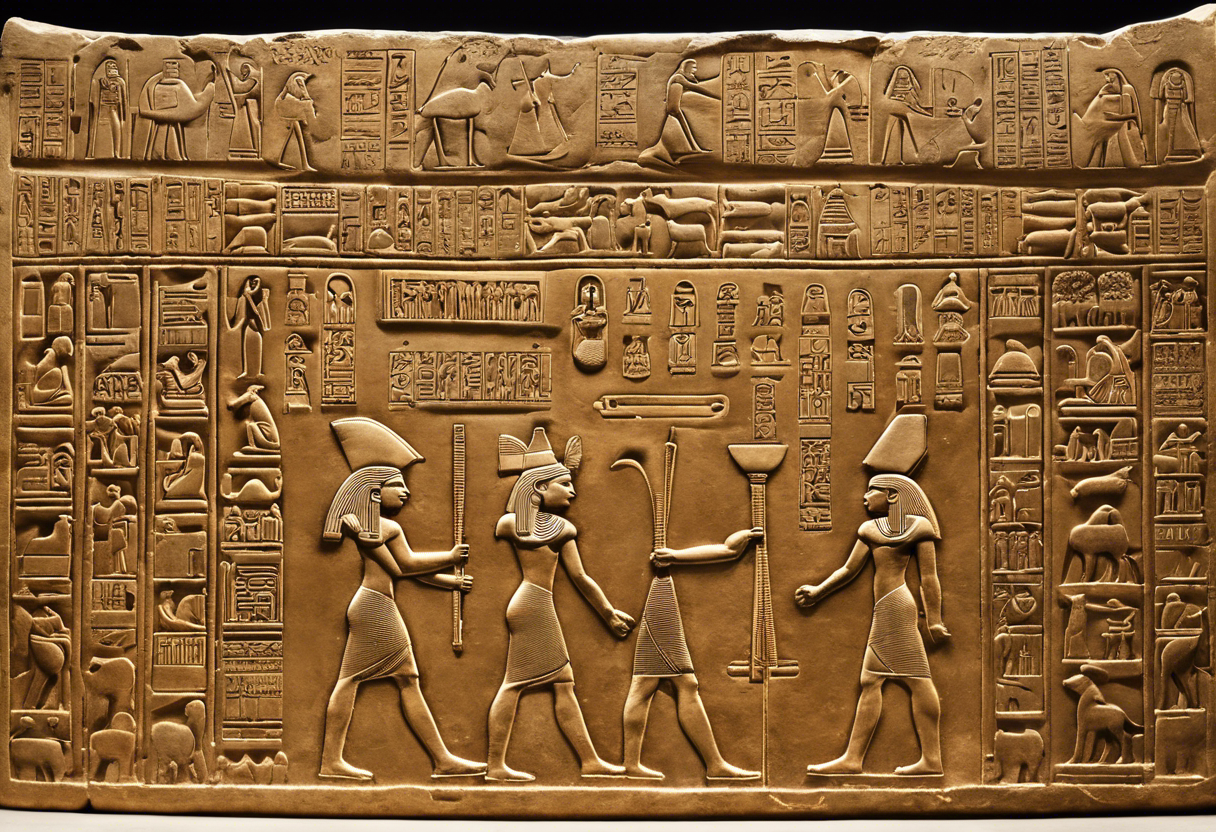
Understanding the historical context of Ancient Egypt is crucial for interpreting and analyzing biblical events that took place in the region. Ancient Egypt, one of the world's oldest civilizations, spanned over three millennia and had a significant influence on the development of various aspects of human civilization.
The ancient Egyptians had a unique religious and cultural system that revolved around a pantheon of gods and goddesses. One prominent goddess was Bastet, who was depicted as a lioness-headed deity and was associated with protection, fertility, and the sun. Bastet was highly revered by the ancient Egyptians, and her worship played a significant role in their daily lives.
In the biblical narrative, Egypt is often mentioned as a backdrop for numerous events and stories. For example, the story of the Israelites' enslavement and subsequent Exodus from Egypt is a central event in the Old Testament. Understanding the historical context of ancient Egypt helps to shed light on the circumstances surrounding this event and provides insights into the political and social dynamics of the time.
The ancient Egyptians were known for their advanced agricultural practices, architectural achievements, and extensive trade networks. Their prowess in engineering can still be witnessed in the awe-inspiring pyramids and temples that dot the Egyptian landscape. These architectural wonders provide tangible evidence of the level of sophistication and cultural development of the ancient Egyptians.
Additionally, ancient Egypt had a complex hierarchical social structure with a pharaoh at the apex of the political and religious hierarchy. The pharaoh was considered a divine ruler, and his authority extended throughout the kingdom. This system of governance greatly influenced the interactions and dynamics between Egypt and neighboring regions, including those mentioned in biblical accounts.
Studying the historical context of ancient Egypt alongside biblical events offers a more comprehensive understanding of the texts and the world in which they were written. It allows for a deeper exploration of the cultural, political, and religious elements that shaped ancient Egypt and provides a lens through which we can view the biblical stories in their historical setting.
By examining parallel historical events and cultural practices, scholars can better grasp the influences and connections between ancient Egypt and biblical narratives. This comparative approach helps to unravel the complexities of the biblical texts and offers valuable insights into the shared historical and cultural context of the ancient Near East.
Key Points:
- Ancient Egypt had a unique religious and cultural system, with gods and goddesses playing a significant role.
- The worship of goddess Bastet was popular in ancient Egypt and influenced daily life.
- Understanding the historical context of ancient Egypt provides insights into the biblical narrative.
- Ancient Egypt was known for its agricultural practices, trade networks, and impressive architectural achievements.
- The pharaoh and the hierarchical social structure of ancient Egypt shaped its interactions with neighboring regions, including those mentioned in the Bible.
- Examining the historical context of ancient Egypt alongside biblical events offers a deeper understanding of the texts and their world.
Connections Between Egyptian Artifacts and Biblical Stories
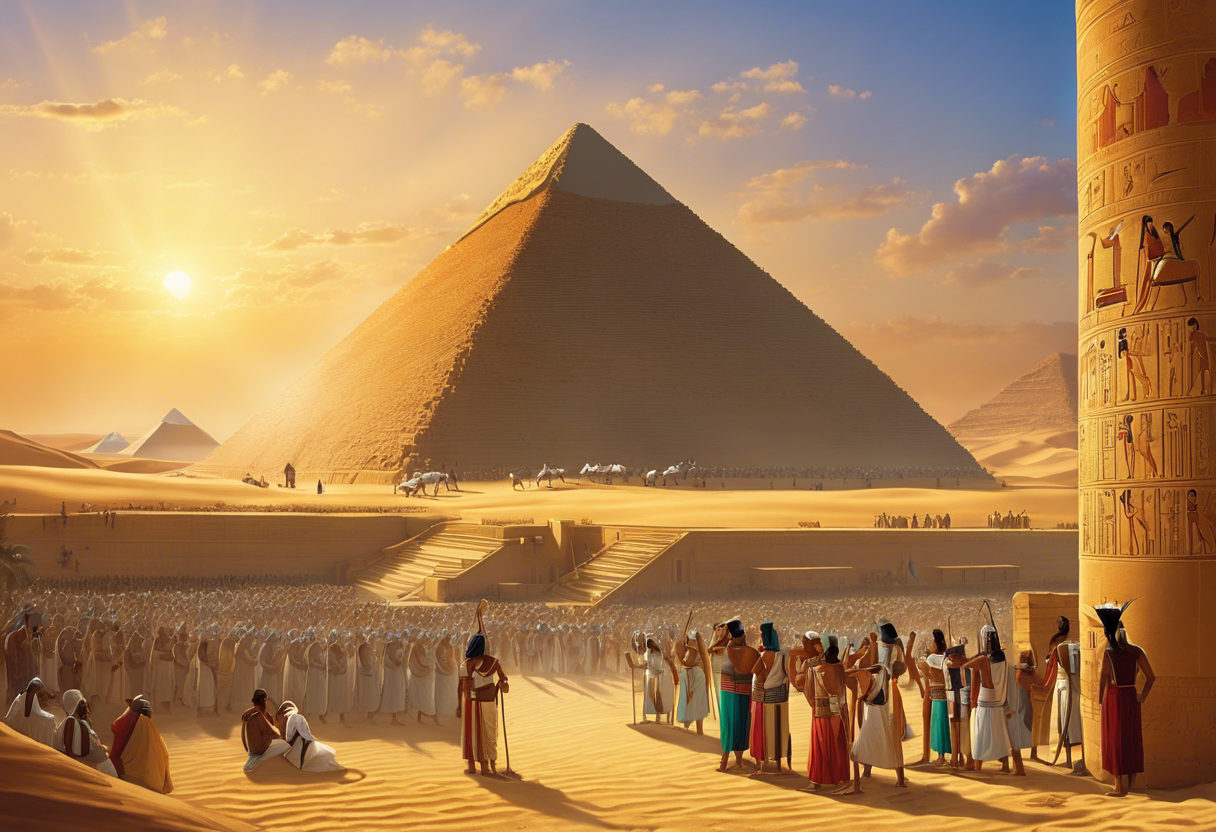
The study of Egyptology provides valuable insights into the historical and cultural context of biblical stories. Ancient Egypt, with its rich mythology and distinctive artistic style, has left behind a wealth of artifacts that offer potential connections to biblical narratives. By examining these artifacts, scholars have uncovered fascinating parallels and influences that shed light on the relationship between Egypt and biblical events.
One significant connection is the portrayal of Egyptian gods and goddesses in ancient Egyptian art, which can be linked to stories and figures mentioned in the Bible. For example, the goddess Bastet, often depicted in the form of a lioness or a woman with the head of a lioness, was an important deity in ancient Egyptian religion. Bastet was associated with protection, fertility, and the sun, and was also revered as a guardian of the pharaoh. Some scholars suggest that the biblical figure of the lion-like creature, Leviathan, may have been influenced by the imagery of Bastet. This connection highlights the cultural exchange and common visual motifs that existed between ancient Egypt and the biblical world.
Another notable connection can be found in the story of Moses and the Exodus from Egypt. Artifacts from ancient Egypt, such as the Merneptah Stele, provide historical references to the presence of Israelites in Egypt during the reign of Pharaoh Merneptah. This inscription mentions the defeat of a foreign people, referred to as "Israel," indicating the existence of a group with this name in ancient Egypt. This archaeological evidence aligns with the biblical account of Moses leading the Israelites out of Egypt. Although the details may differ, there is a clear connection between the historical context of ancient Egypt and the biblical narrative of the Exodus.
Moreover, the concept of monotheism, which is central to biblical theology, has raised questions about its possible origins in ancient Egypt. The reign of the pharaoh Akhenaten (1353-1336 BCE) is particularly significant in this regard. Akhenaten broke away from traditional Egyptian polytheism and introduced the worship of a single god, the Aten. Some scholars speculate that this early form of monotheism influenced the Israelites and ultimately paved the way for the development of monotheistic beliefs outlined in the Bible. While the direct connection between Akhenaten's religious reforms and biblical monotheism is speculative, studying the religious changes in ancient Egypt does provide valuable context for understanding biblical theology.
By exploring and analyzing Egyptian artifacts in conjunction with biblical stories, researchers can gain deeper insights into the cultural and historical framework of both ancient Egypt and the Bible. These connections offer a unique perspective on the interplay between religion, art, and literature in the ancient world. Further study and interdisciplinary research enable scholars to unravel the complexities of ancient Egypt and enhance our understanding of the biblical narratives that have shaped Western civilization.
Influence of Egyptian Culture and Religion on the Bible
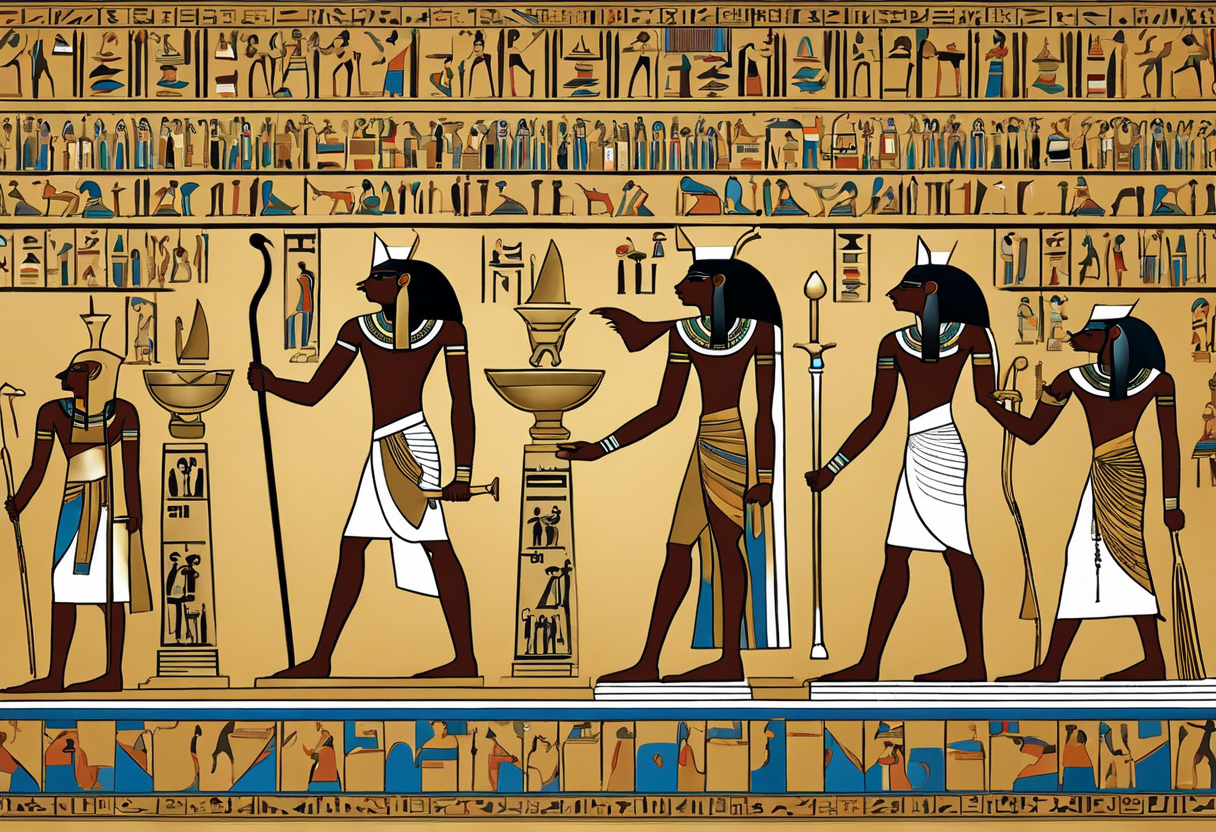
Ancient Egypt had a profound impact on the development of biblical texts and the religious beliefs found within them. The influence of Egyptian culture can be seen in various aspects of the Bible, ranging from religious practices and beliefs to the use of symbols and motifs.
- Religious Beliefs and Concepts
One of the key influences of Egyptian culture on the Bible is the adoption of certain religious beliefs and concepts. For example, the Hebrew concept of monotheism, the belief in a single god, is thought to have been influenced by the Egyptian religious beliefs that centered around the worship of major deities such as Amun-Ra and Osiris. Additionally, the concept of an afterlife and the belief in judgment and resurrection are also paralleled in both Egyptian and biblical beliefs.
- Symbols and Motifs
Egyptian symbols and motifs are plentiful in the Bible, providing evidence of the influence of Egyptian culture on biblical texts. For instance, the use of animal imagery in Egyptian mythology, such as the lion and the serpent, can be found in biblical stories and symbolism. Furthermore, the use of anthropomorphic figures, such as angels, displays a similarity to the Egyptian representation of deities as human-animal hybrids, such as the falcon-headed god Horus or the lion-headed goddess Bastet.
- Cultural Practices and Customs
The cultural practices and customs of ancient Egypt have also left their mark on the Bible. The story of Moses, for example, draws upon the Egyptian tradition of exposing newborn infants in order to rescue Moses from the Egyptian king's decree to kill all Hebrew male infants. Additionally, elements of Egyptian legal and social customs can be seen in biblical laws and regulations, such as those regarding slavery and inheritance.
- Architectural and Artistic Influences
The architectural and artistic styles of ancient Egypt can be observed in the biblical descriptions of monumental buildings and artistic representations. The construction of temples and palaces, as well as the use of hieroglyphics and decorative motifs, reveal the influence of Egyptian architectural and artistic practices. The description of the Tabernacle in the wilderness and the use of elaborate motifs in religious artifacts can be seen as drawing inspiration from Egyptian architectural and artistic traditions.
It is important to note that while the Bible shows influences from Egyptian culture, it should not be interpreted as a direct copy or reproduction of Egyptian religious texts. Rather, the influence of Egyptian culture can be seen as a result of cultural and historical interactions between ancient Egypt and the region that gave birth to biblical traditions.
In summary, the influence of Egyptian culture and religion on the Bible is evident in various aspects of the text. From religious beliefs and concepts to symbols and motifs, as well as cultural practices and artistic influences, ancient Egypt played a significant role in shaping some of the core elements found within biblical narratives. Understanding these influences can provide valuable insights into the historical and cultural context of the Bible.
Exploring the Exodus: Egyptological and Biblical Perspectives
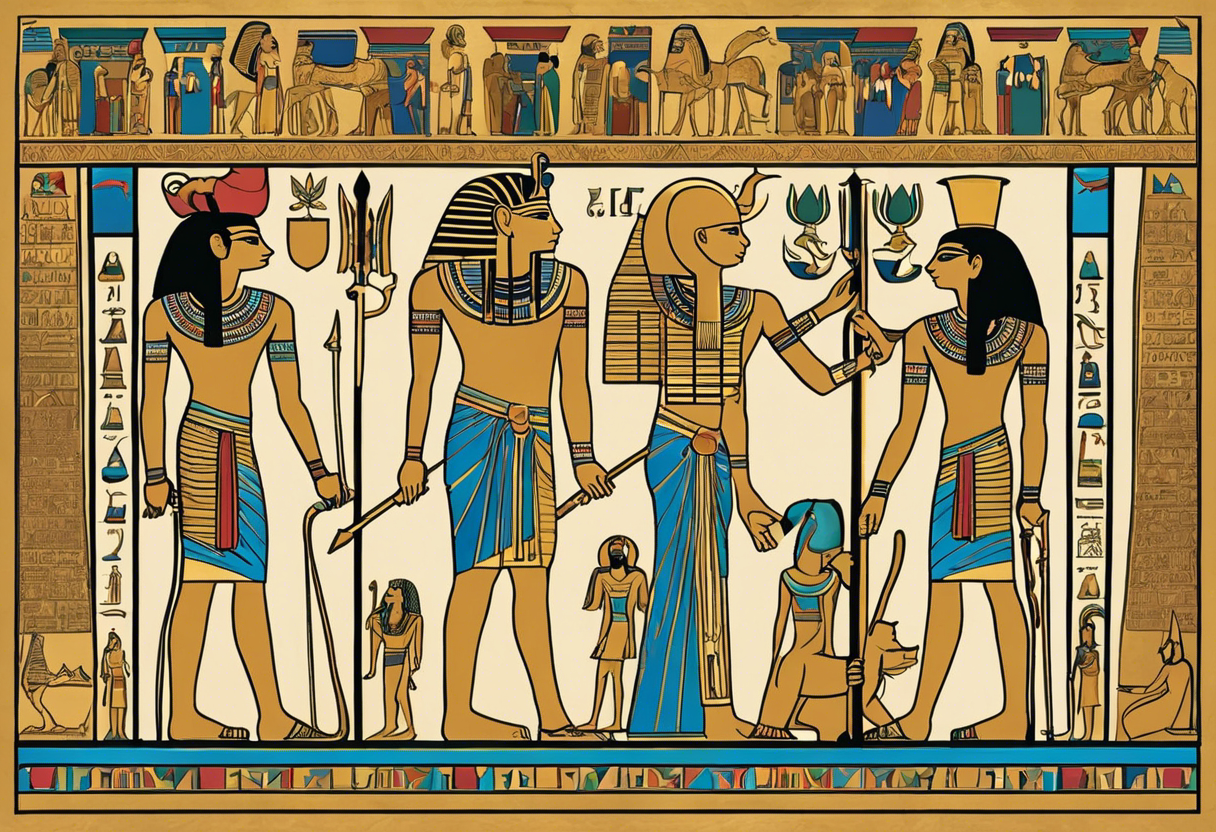
The story of the Exodus, as described in the book of Exodus in the Bible, is one of the most significant events in ancient Israelite history. It narrates the liberation of the Israelites from slavery in Egypt and their journey to the Promised Land. This event has been a subject of great interest and debate among scholars, both in the fields of Egyptology and biblical studies. By examining both Egyptological and biblical perspectives, researchers gain a deeper understanding of the historical and cultural context of the Exodus story.
From an Egyptological perspective, scholars analyze ancient Egyptian texts, inscriptions, and archaeological evidence to shed light on the historical reality behind the Exodus narrative. They investigate the social, political, and religious climate of ancient Egypt during the possible time period of the Exodus. By studying the reigns of different pharaohs and the corresponding historical events, Egyptologists attempt to identify potential candidates for the pharaoh during the time of Moses and the Exodus. However, this task is challenging due to the scarcity of direct evidence linking specific pharaohs to the Exodus.
One aspect of the Exodus story that often intrigues Egyptologists is the presence of Egyptian-Semitic names among the Israelites, such as Moses and Pharaoh. Some researchers believe that the story of Moses may have been influenced by the historical events surrounding the reign of Akhenaten, the pharaoh who introduced the worship of the sun god Aten and attempted to establish a monotheistic religion in Egypt. The similarities between the religious reforms of Akhenaten and the role of Moses as the leader of the Israelites have led to interesting hypotheses and conjectures.
On the other hand, biblical scholars analyze the Exodus story from a theological and literary perspective. They examine the narrative structure, themes, and motifs present in the biblical text to unravel its intended message to ancient Israelite readers. By comparing the Exodus story with other biblical accounts and ancient Near Eastern texts, scholars gain insights into the religious and cultural context of the biblical writers. For instance, the portrayal of Pharaoh as a stubborn and obstinate ruler may reflect the biblical writers' theological agenda to elevate the power and authority of God in contrast to the Egyptian gods, such as the cat goddess Bastet.
While Egyptologists and biblical scholars approach the Exodus story from different angles, their research often overlaps and complements each other. By bringing together these perspectives, researchers can develop a more comprehensive understanding of the historical, cultural, and theological dimensions of the Exodus narrative. Furthermore, this interdisciplinary approach allows for a more nuanced interpretation of the text, taking into consideration both the Egyptological and biblical contexts.
In conclusion, the exploration of the Exodus story through Egyptological and biblical perspectives offers valuable insights into the history, culture, and religious beliefs of ancient Egypt and Israel. By examining the archaeological evidence and analyzing the biblical text, scholars contribute to the ongoing discussion and understanding of this significant event in ancient Israelite history. The interdisciplinary nature of this research enables a holistic approach that enhances our understanding of both ancient Egypt and the biblical narrative.
Comparing Egyptian Hieroglyphics with Biblical Texts
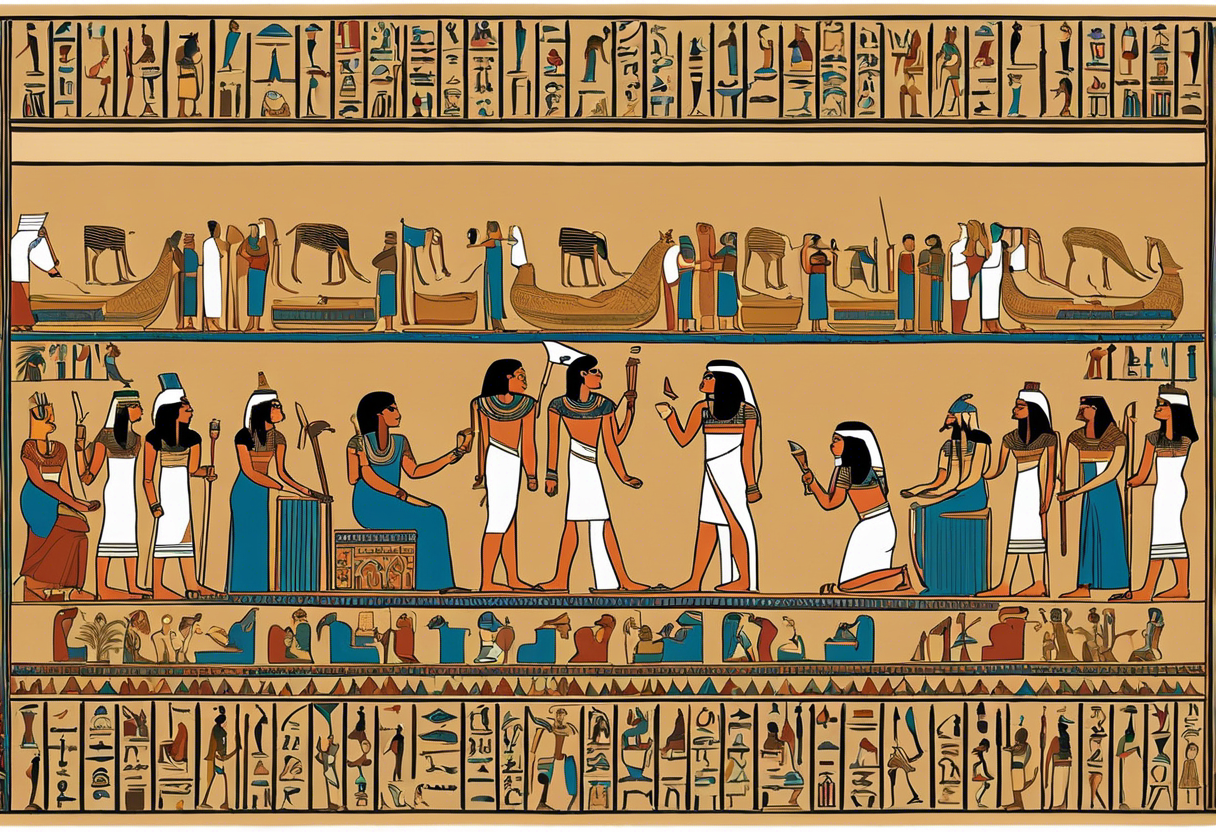
When studying and understanding ancient Egypt, comparing Egyptian hieroglyphics with biblical texts can provide valuable insights into the culture, history, and beliefs of the ancient Egyptians. Both sources offer distinct perspectives on various aspects of ancient Egyptian civilization, providing a deeper understanding of the society that existed thousands of years ago.
One area where a comparison can be particularly enlightening is the depiction of deities in both ancient Egypt and the Bible. Ancient Egyptian hieroglyphics often depict gods and goddesses, such as the widely worshipped Bastet, the goddess of protection, joy, and the home. Bastet is frequently depicted with the head of a lioness or domestic cat. Her image can be found in various forms throughout Egyptian hieroglyphics, temples, and artifacts.
In biblical texts, we also find references to various divine beings. However, the concept of monotheism, the worship of a single deity, is more prominent in biblical narratives compared to ancient Egyptian beliefs. Nevertheless, the Bible acknowledges the existence of other deities worshiped by different cultures, such as the Canaanite god Baal or the Egyptian god Osiris.
By comparing the depictions and attributes of deities in both ancient Egyptian hieroglyphics and biblical texts, we can gain a deeper understanding of the religious beliefs and practices of ancient civilizations. These comparisons provide valuable insights into the cultural exchange and influence that took place between different ancient civilizations.
Another area where a comparison can shed light on ancient Egyptian society is the portrayal of social hierarchies. Egyptian hieroglyphics often include representations of pharaohs, priests, and craftsmen, showcasing the hierarchical structure of the society. The biblical texts also mention various social classes, from kings and prophets to farmers and slaves, providing additional perspectives on the social dynamics of the time.
By examining the similarities and differences between Egyptian hieroglyphics and biblical texts, researchers can identify common themes and cultural influences, offering a comprehensive understanding of ancient Egypt within its broader historical context. This comparative approach helps to decipher the complex layers of ancient Egyptian society and its relationship with other civilizations in the ancient Near East.
It is important to note that while comparisons between Egyptian hieroglyphics and biblical texts can be insightful, they should be approached with caution. The contexts and purposes of these sources are distinct and should be analyzed within their respective frameworks. Researchers must consider the theological, cultural, and historical contexts of both ancient Egypt and the Bible to avoid misinterpretations or oversimplifications.
Through a careful examination of Egyptian hieroglyphics and biblical texts, scholars can uncover intriguing connections and deepen our understanding of both ancient Egypt and the biblical world. By embracing an interdisciplinary approach that combines Egyptology, biblical studies, and other relevant fields, researchers can paint a more accurate and comprehensive picture of the ancient past, allowing us to appreciate the rich complexities of these ancient civilizations.
The Role of Egypt in the New Testament
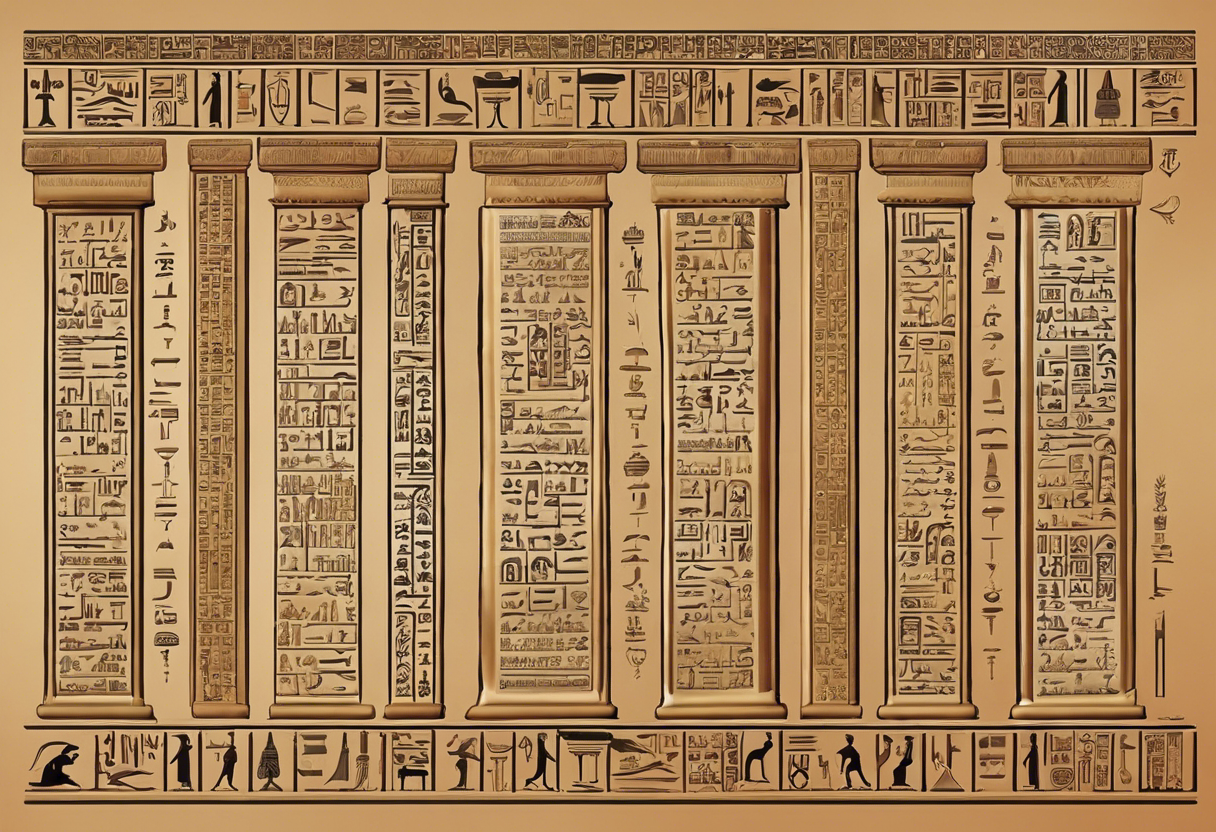
Egypt, known for its rich history and intricate culture, also plays a significant role in the New Testament. While the focus of the New Testament primarily centers around the life and teachings of Jesus Christ, Egypt is mentioned in several instances, providing valuable insights into the biblical narrative.
One of the notable events that ties Egypt to the New Testament is the flight of the Holy Family to Egypt. Following the birth of Jesus, King Herod ordered the killing of all male infants in Bethlehem in an attempt to eliminate the potential threat to his rule. In response to this threat, Joseph, Mary, and baby Jesus fled to Egypt, seeking refuge until it was safe to return. This event fulfills the prophecy in Hosea 11:1, which states, "Out of Egypt I called my son." The escape to Egypt not only illustrates the immediate dangers Jesus faced but also establishes a connection between Egypt and the divine plan of salvation.
Furthermore, the Gospel of Matthew recounts another event that takes place in Egypt. After the death of Herod, an angel appeared to Joseph in a dream, instructing him to return to the land of Israel. Joseph, Mary, and Jesus settled in the town of Nazareth, thus fulfilling another prophecy that Jesus would be called a Nazarene. The inclusion of Egypt in this narrative highlights the role of Egypt as a place of refuge and fulfillment of prophetic fulfillment.
Egypt is also referenced in the Gospel of Mark, where the writer recounts that Jesus, after his baptism by John the Baptist, was driven into the wilderness by the Spirit. This wilderness is often associated with the desert regions of Judea and beyond, including the Egyptian wilderness where the Israelites wandered for forty years. This connection to Egypt serves to highlight the symbolic significance of Jesus' time in the wilderness, mirroring the Israelites' experience in the Exodus narrative.
Another mention of Egypt in the New Testament can be found in the Book of Revelation. In chapter 11, the apostle John describes the two witnesses who will prophesy for 1,260 days before being killed and resurrected. These witnesses are said to have the power to shut the sky to prevent rain and to turn water into blood. The reference to these plagues is reminiscent of the plagues that occurred in Egypt during the time of Moses and the Israelite exodus. This connection suggests that the events described in Revelation are linked to the history of Egypt and the divine judgment witnessed in the Old Testament.
In conclusion, Egypt's role in the New Testament is not one of central focus but rather serves as a backdrop to several significant events and narratives. From the flight of the Holy Family to Egypt as a place of refuge, to the symbolic connections between the wilderness and the Exodus, to the parallels between the plagues of Egypt and the events described in Revelation, Egypt provides a contextual framework for understanding and interpreting these biblical texts. By examining the biblical accounts in their historical and cultural context, we gain a deeper understanding of the role of Egypt in the New Testament and its significance within the larger biblical narrative. Modern Egyptology in Relation to Biblical Studies
Modern Egyptology, the scientific study of ancient Egypt, has contributed significantly to our understanding of the biblical texts and their historical context. Through the excavation of archaeological sites, the decipherment of hieroglyphic inscriptions, and the analysis of ancient artifacts, Egyptologists have shed light on various aspects of ancient Egyptian society, religion, and history. This wealth of knowledge has been instrumental in enriching our understanding of the biblical narratives that mention or are influenced by ancient Egypt.
One area in which modern Egyptology has made a significant impact is the study of ancient Egyptian religion. By examining the religious practices and beliefs of ancient Egyptians, scholars have been able to identify parallels and influences on biblical narratives. For example, the goddess Bastet, worshipped as the feline deity of protection, fertility, and the home, finds mention in the biblical text as "Bast" or "Bubastis" and is associated with the city of Bubastis in the Old Testament. Through their knowledge of ancient Egyptian religious texts and iconography, Egyptologists have provided valuable insights into the role of this deity in both Egyptian and biblical contexts.
Furthermore, Egyptologists have contributed to our understanding of the historical context of ancient Egypt mentioned in the Bible. By studying inscriptions, royal decrees, and other historical documents, researchers have identified pharaohs, events, and locations that align with biblical accounts. For instance, the biblical story of the Exodus, in which the Israelites escape from slavery in Egypt, has been studied in relation to the reign of pharaoh Ramesses II and the archaeological evidence that supports or contradicts this event. Through their meticulous investigations, Egyptologists have helped reconstruct the historical backdrop against which the biblical narratives were set.
In addition, modern Egyptology has also examined the linguistic and cultural connections between ancient Egypt and the biblical texts. Comparative linguistic studies have revealed similarities between Egyptian and ancient Semitic languages, shedding light on the possible interactions and influences between these cultures. By examining the material culture of ancient Egypt, such as pottery, architecture, and burial practices, Egyptologists have provided valuable insights into the broader cultural context in which the biblical narratives were developed.
Overall, modern Egyptology has played a crucial role in illuminating the historical and cultural background of the biblical texts. Through their expertise in deciphering ancient Egyptian texts, artifacts, and archaeological findings, Egyptologists have contributed significantly to our understanding of the biblical narratives and their relation to ancient Egypt. By examining the religious, historical, and cultural aspects, these scholars have enriched our knowledge of the biblical world and its connections to one of the most fascinating civilizations in human history.
Controversies and Debates in Egyptology and Biblical Interpretation
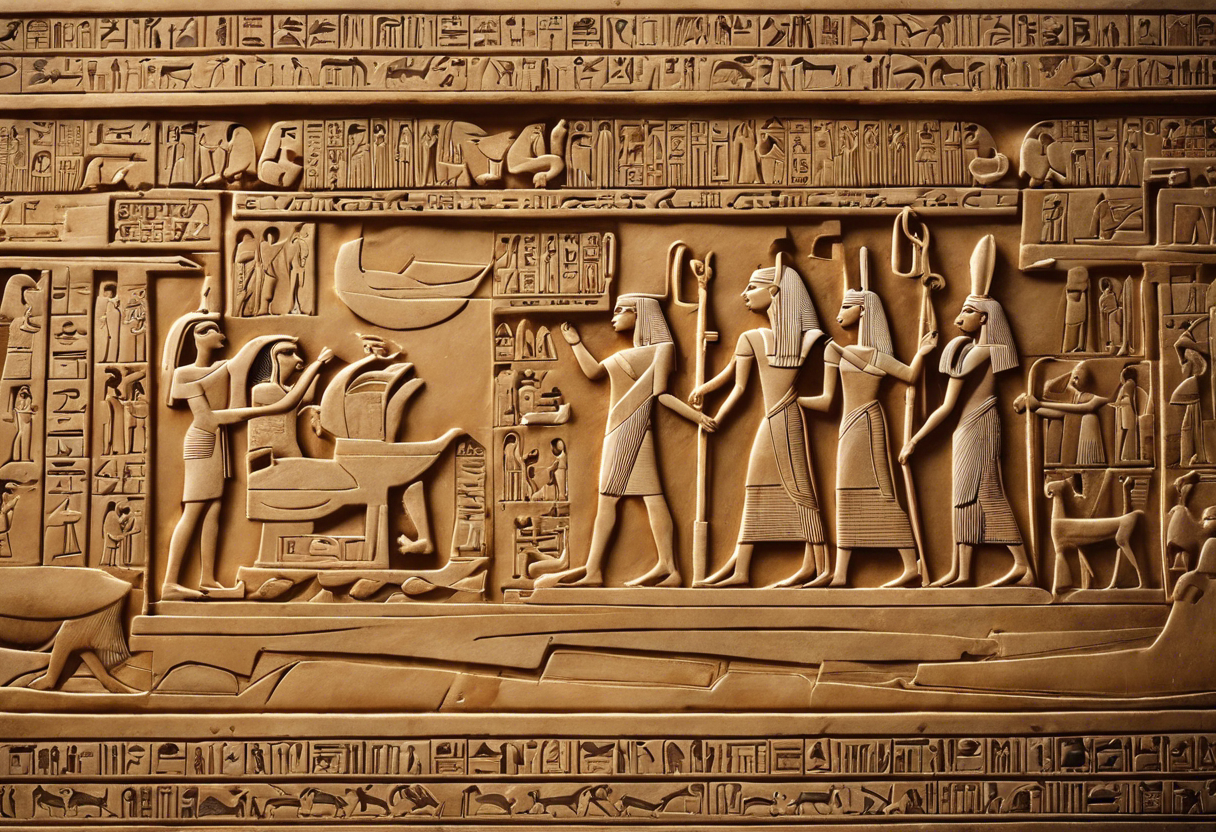
The field of Egyptology and biblical interpretation has witnessed numerous controversies and ongoing debates that have shaped our understanding of ancient Egypt and its relationship with the biblical context. These controversies arise from differing interpretations of archaeological evidence, religious texts, and historical accounts, leading to a diverse range of perspectives among scholars.
One of the major controversies revolves around the dating of various events and figures mentioned in the Bible and their connection to ancient Egyptian history. For example, the biblical account of the Israelite Exodus from Egypt has been a subject of intense debate. Some scholars argue for a literal interpretation, placing the Exodus in the 13th century BCE during the reign of Ramses II, while others propose alternative theories suggesting different timeframes or even dismissing the event as a historical fabrication.
Another contentious topic is the identification of Egyptian figures and events mentioned in the Bible. Scholars have attempted to link biblical characters like Joseph, Moses, and the pharaohs of the Exodus with specific individuals from Egyptian history. However, the lack of direct evidence and the existence of multiple candidates with similar names has made these identifications highly speculative and subject to debate.
The role of ancient Egyptian religious beliefs and practices in shaping biblical narratives is another area of contention. For instance, the mention of "bastet," the Egyptian goddess associated with fertility, childbirth, and home, in the context of the biblical account of the golden calf incident (Exodus 32:4-6) has generated discussion regarding the influence of Egyptian religious ideas on the Israelites during their time in Egypt.
Furthermore, debates surrounding the historical accuracy of biblical accounts and their depiction of ancient Egypt continue to engage scholars. Some argue that the biblical texts reflect a genuine historical memory, while others view them as primarily theological or literary constructions with limited historical value. These debates extend to topics such as the historicity of the biblical plagues, the nature of the relationship between Joseph and the pharaoh, and the architectural and cultural similarities between ancient Egypt and biblical descriptions.
The controversies and debates in Egyptology and biblical interpretation highlight the complex nature of studying ancient Egypt through the lens of the Bible. The multifaceted nature of the evidence, the merging of historical, religious, and literary perspectives, and differing scholarly approaches contribute to the ongoing discussions and varying interpretations within the field. Recognizing and engaging in these debates allows for a more nuanced understanding of the intersection between ancient Egypt and the biblical narrative.
Conclusion: Relevance of Egyptology in Understanding the Bible
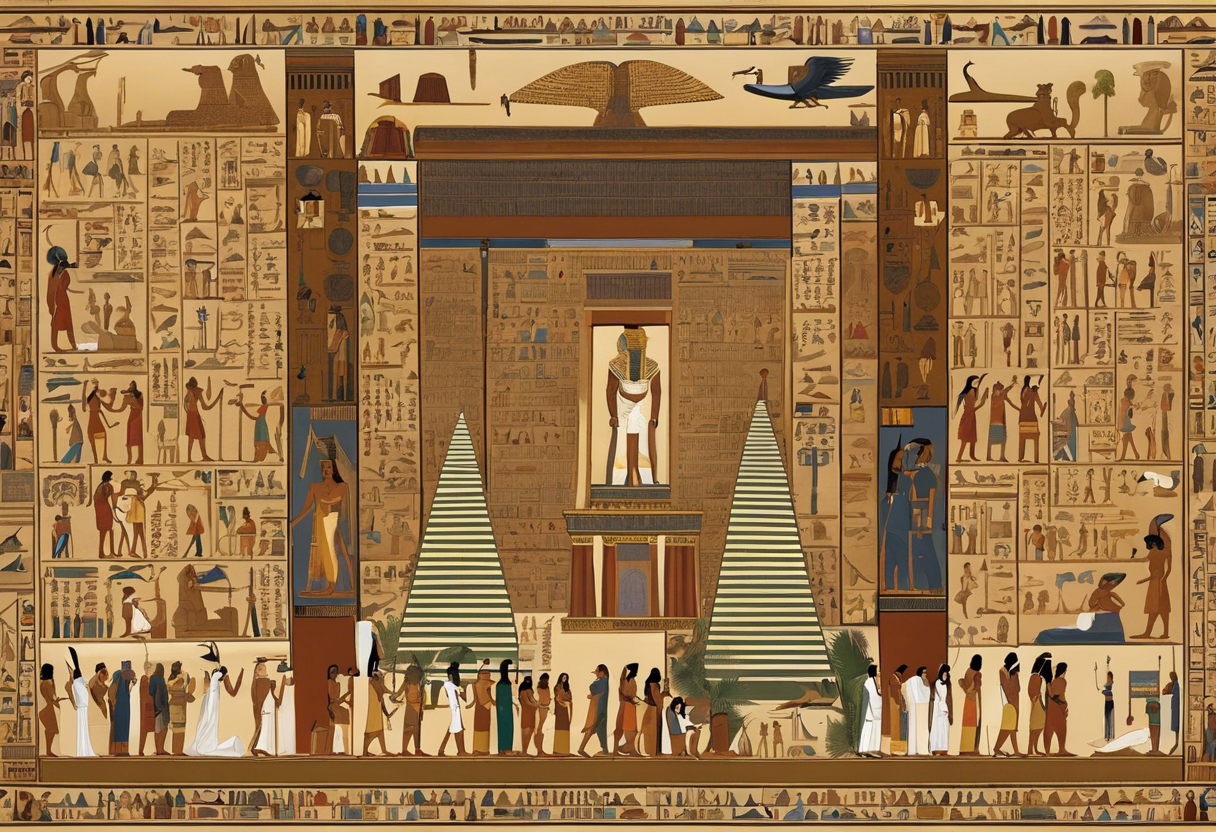
The study of Egyptology plays a crucial role in our understanding of the Bible and its historical context. By examining the civilization of ancient Egypt, we can gain valuable insights into the cultural, social, and religious aspects that influenced the biblical narratives.
One of the most significant connections between Egyptology and the Bible lies in the various references to ancient Egyptian deities and practices. For instance, the mention of the goddess Bastet in the Bible provides a deeper understanding of the importance of feline iconography and its association with fertility and protection. This knowledge enhances our comprehension of the biblical texts where such symbols and beliefs are mentioned.
Furthermore, the study of Egyptology helps shed light on the cultural exchange between ancient Egypt and other regions, especially Palestine, which has significant implications for understanding biblical events. The presence of the Israelites in Egypt, their subsequent exodus, and their interactions with Pharaoh all highlight the historical context in which biblical stories took place. Egyptology allows us to explore the possible historical events that might have influenced these biblical accounts and provides a framework for understanding the cultural background of the ancient Israelites.
Additionally, Egyptology provides us with valuable insights into the everyday lives of the ancient Egyptians, their societal structure, and their religious practices. This knowledge is crucial for comprehending the messages and themes conveyed in the biblical narratives. For example, understanding the role of pharaohs in ancient Egypt helps us interpret the conflicts and interaction between the Israelites and this powerful ruling authority depicted in the Bible.
Moreover, the study of Egyptian hieroglyphs, artifacts, and texts provides us with valuable sources that can be used to compare and corroborate events mentioned in the Bible. The discovery of the Merneptah Stele, which mentions the Israelite people in connection with a military campaign, is a prime example of how Egyptology can provide evidence and context for biblical accounts.
In summary, Egyptology plays a fundamental role in facilitating our understanding of the Bible by providing insights into ancient Egyptian culture, religious practices, societal structures, and historical events. By exploring the rich history and context of Egypt, we can gain a deeper appreciation for the biblical narratives and their significance in a broader historical and cultural context. The relevance of Egyptology in understanding the Bible cannot be overstated, as it enriches our comprehension of the biblical texts and enhances our appreciation of their historical and cultural background.
